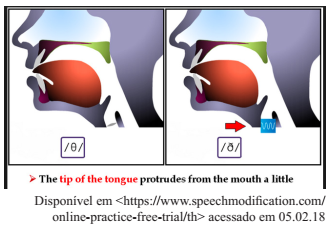Questões de Concurso
Para if-sp
Foram encontradas 1.803 questões
Resolva questões gratuitamente!
Junte-se a mais de 4 milhões de concurseiros!
Considere as seguintes assertivas a respeito da Educação Profissional e Tecnológica, nos termos da Lei nº 11.741/2008, que alterou dispositivos da Lei nº 9.394/96:
I – Os cursos de educação profissional tecnológica de graduação e pós-graduação estão adstritos às diretrizes curriculares nacionais estabelecidas pelo Conselho Nacional de Educação.
II – A Educação Profissional e Tecnológica contempla a educação profissional técnica de nível médio, contudo, fica dispensada de observar as diretrizes curriculares nacionais estabelecidas pelo Conselho Nacional de Educação.
III – A educação de jovens e adultos deverá articular-se, obrigatoriamente, com a educação profissional.
IV – As instituições de educação profissional e tecnológica oferecerão cursos especiais, abertos à comunidade, condicionando a matrícula necessariamente ao nível de escolaridade do candidato.
Está correto o que se afirmar em:
Com base na lei nº 11.892/2008, escolha a alternativa que preencha corretamente as lacunas da afirmação abaixo:
No desenvolvimento da sua ação acadêmica, o Instituto Federal, em cada exercício, deverá garantir o mínimo de ______ de suas vagas para a educação profissional técnica de nível médio, prioritariamente na forma de cursos integrados, para os concluintes do ensino fundamental e para o público da educação de jovens e adultos e o mínimo de 20% de suas vagas para cursos de____________.
Hutchinson and Waters (1987) use the analogy of a tree to get to a definition of what ESP is. However, they approach this definition by showing not what ESP is, but rather by showing what ESP isn’t.
Choose the statement that is true according to their definition:
Tomlinson ( 2011, p. 9-10 ) postulates that “materials should help learners to develop confidence”.
Which of the following alternatives present the author’s statement about this subject?
Brown ( 2007, p.15-17 ) explains the differences among methodology, approach, method, curriculum/syllabus and technique.
Choose the alternative in which the definition of METHOD is according to Brown’s (2007) explanation.
An autonomous learner is someone who is able to learn on their own. In a sense, every learner is autonomous to some extent because each student in the classroom has to learn for themselves. Teachers try to help students learn by exposing them to English and providing opportunities for them to practice the new language in class as well as revise and learn at home, but they cannot learn for their students.
Students who are successful are those who take some responsibility for their learning. We can promote this by encouraging and fostering students’ ability to remember, learn, extrapolate and achieve on their own. Think about something you learned to do. Someone probably showed you what to do and how to do it, but in the end it was up to you to try for yourself. The moment that you did this was the moment you really began to learn.
(LOWES, Ricky. Helping Students to Learn. A Guide to Learner Autonomy. Richmond : 1998, p.5)
What Teaching Approach is best described by the passage above?
“Different learners have different preferred learning styles. This means that activities should be variable and should cater for all learning styles” (TOMLINSON, 2011, p. 17) Tomlinson (2011) presents the styles of learning which need to be catered for in language learning material.
Choose the alternative in which the exemplification of the learning style is correct:
The Screen Actors Guild Awards were a couple of nights ago—they’re more commonly called the SAG Awards—and they had a doozy of an error on Judi Dench’s name card. She was nominated for an award called Outstanding Performance by a Female Actor in a Leading Role for her work in the movie “Victoria & Abdul,” but instead of spelling it R-O-L-E for “role,” they spelled it R-O-L-L, like the bread.

Choose the answer that justify the spelling mistake:
Brown (2007, p. 62-79) proposes an approach to language teaching based on cognitive, socioaffective and linguistic principles.
Choose the alternative in which the SOCIOAFFECTIVE PRINCIPLES are presented.
A “method” is not a relevant issue in such a connection between approach and technique. As your teacher-trainees develop and carry out classroom techniques, they can benefit by grounding everything they do in well-established principles of language learning and teaching. In so doing, they will be less likely to bring a pre-packaged and possibly ineffective method to bear, and more likely to be directly responsive to their students’ purposes and goals.
(BROWN, H. Douglas. Beyond Method: Toward a principled approach to language learning and teaching. Anais do XIII ENPULI. 1995 p.45)
Which statement is correct according to Brown?
After analyzing the cartoons, answer the question:

What can be stated about students’ learning
autonomy?
On the other hand, one may wonder what role English for Specific Purposes (ESP) plays in Brazil? The answer is: ESP has also its place in the Brazilian educational c ontext. It is now a well-established area field of language teaching and learning in the country. As already attested elsewhere (Ramos, 2005) ESP is a part of innumerable new textbooks that were put on the market in the last 10 years. It is part of the content indicated for the tertiary level entrance exams (maned Vestibular) in the country. It is the name of many courses that are offered in Brazilian universities.
(RAMOS, R. C. G. ESP in Brazil: history, new trends and challenges. In: KRZANOWSKI, M. (Ed.). ESP and EAP in Developing and in Least Developing Countries. IATEFL, 2008. p. 68-83.)
Which of the following are characteristics of English for Specific Purposes?
1. Meets specific needs of learners.
2. Makes use of underlying methodology and activities of the discipline it serves.
3. Is centered on the language appropriate to these activities in terms of grammar, lexis, syntax, study skills, discourse and genre.
4. Is designed for business purposes only.
5. Follows a specific methodology.
Leaving words out
Ellipsis means leaving words out. Instead of repeating a noun phrase, we can use a pronoun or we can leave the pronoun out. Instead of repeating a verb phrase, we can use a substitution form or leave the substitution form out. We usually use ellipsis instead of repeating words before nouns in phrases joined by and, but, or. We can also use ellipsis after a comma in a list.
(adapted from YULE, George. Oxford Practice Grammar. Pearson: 2001, p.106)
Choose the shortest possible version of the following text considering the explanation about ellipsis.
He put the money on the table and he sat down. He sat in his hot clothes and he felt heavy. The woman looked over at him and she smiled. Her smile said she was in charge and she could take his money if she wanted to take his money. The smile lingered for a moment or two than the smile disappeared and the smile was replaced by a dark stare.

Choose the words in which the ‘th’ sound is voiced